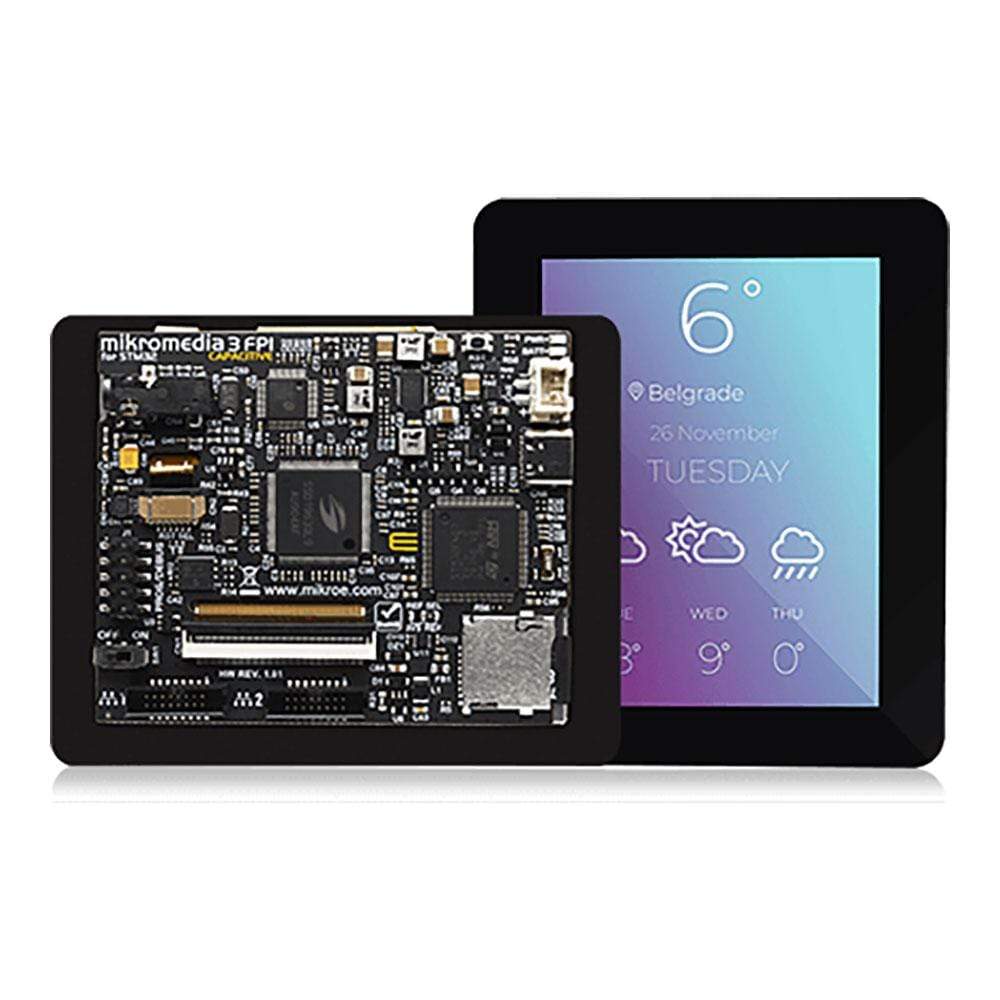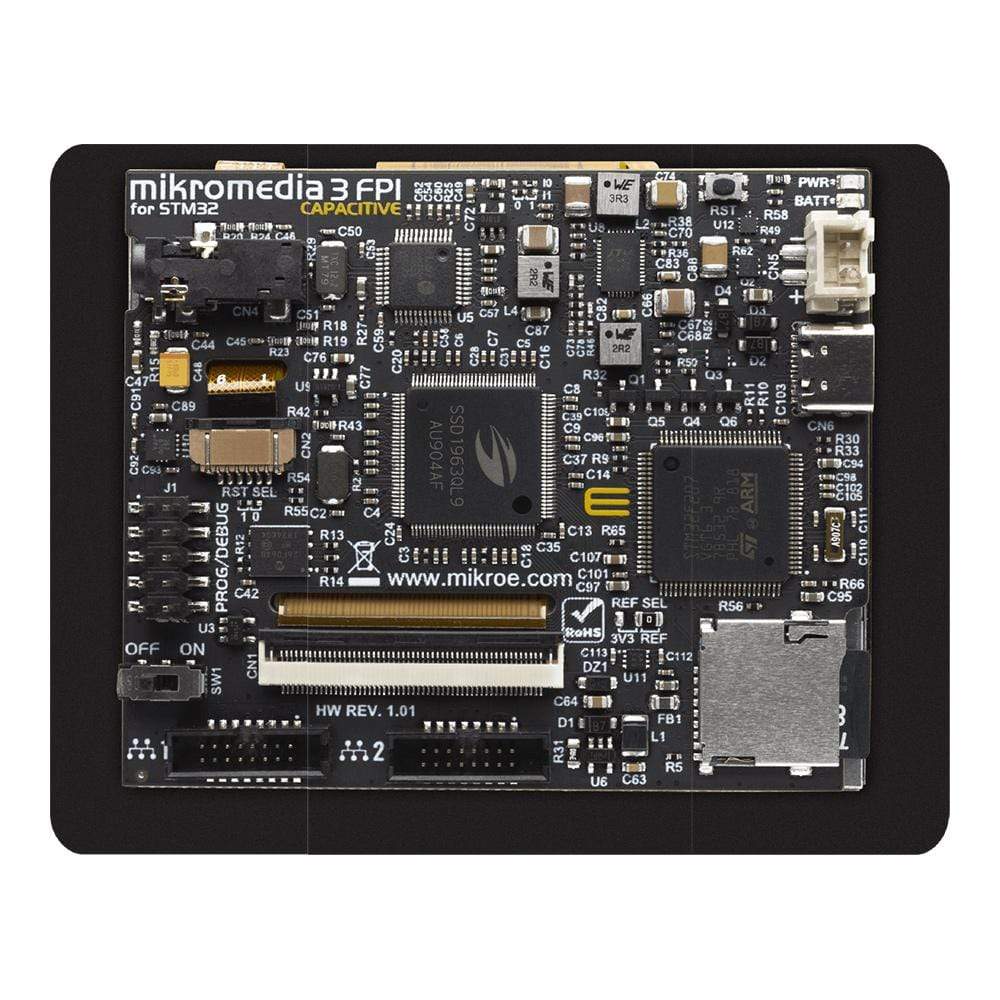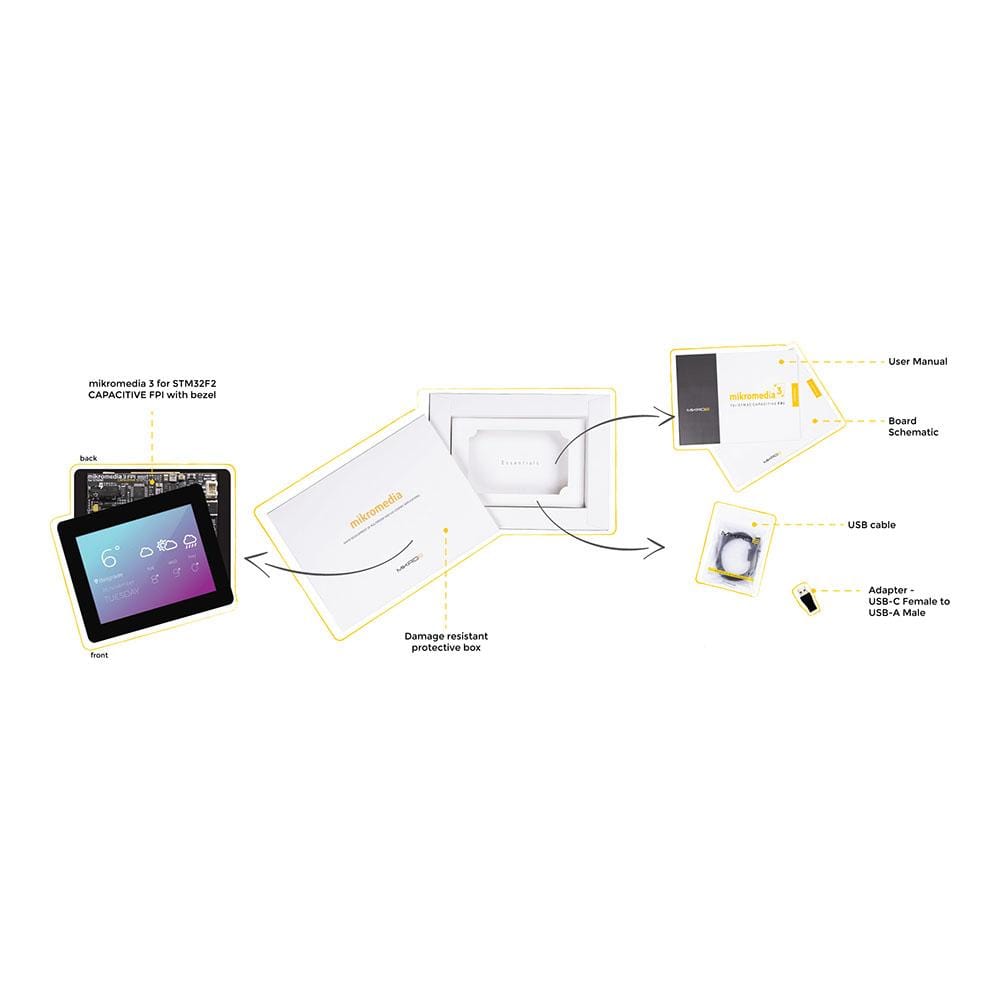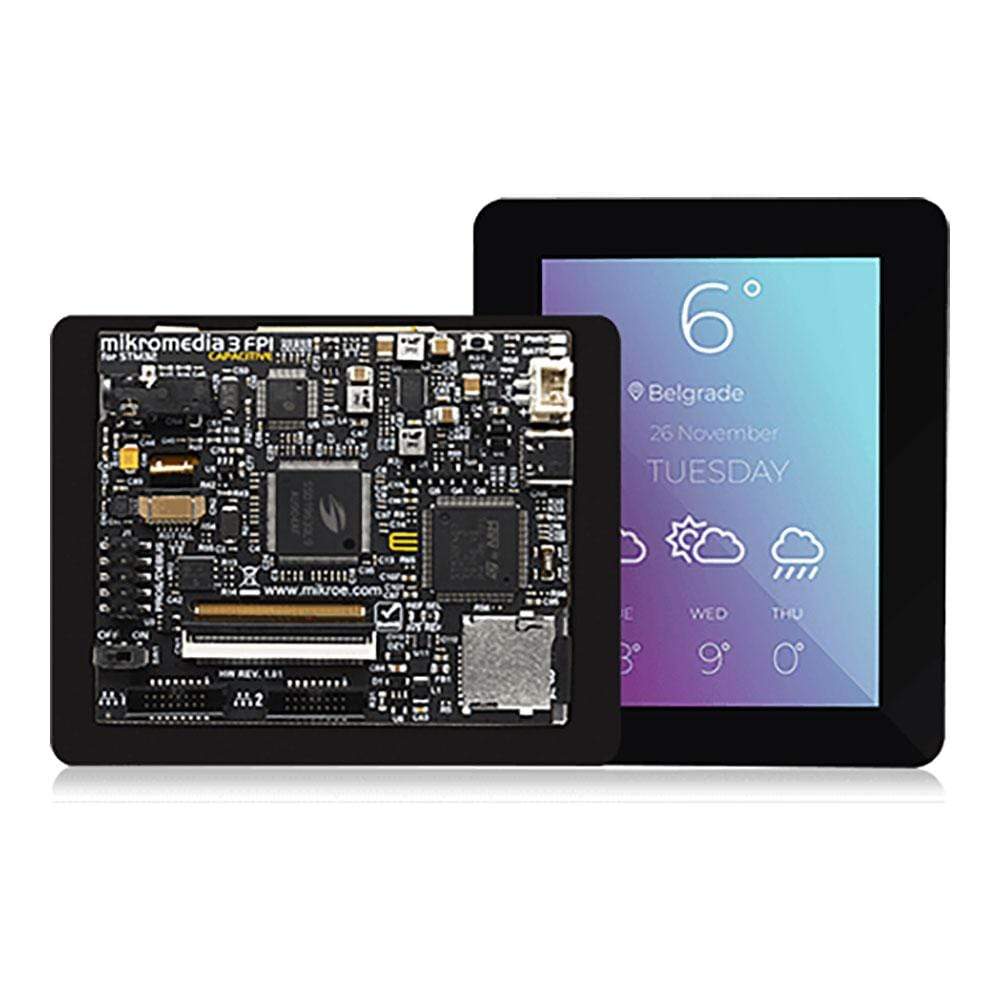
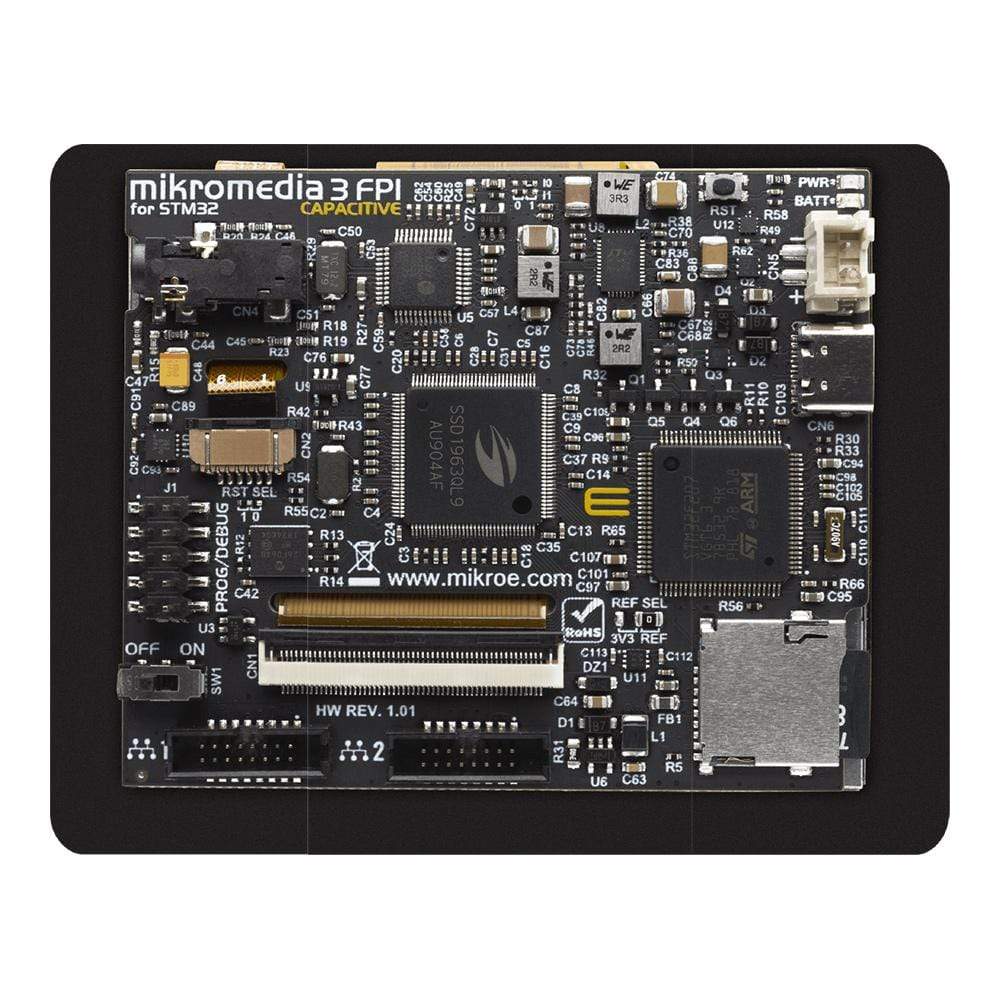
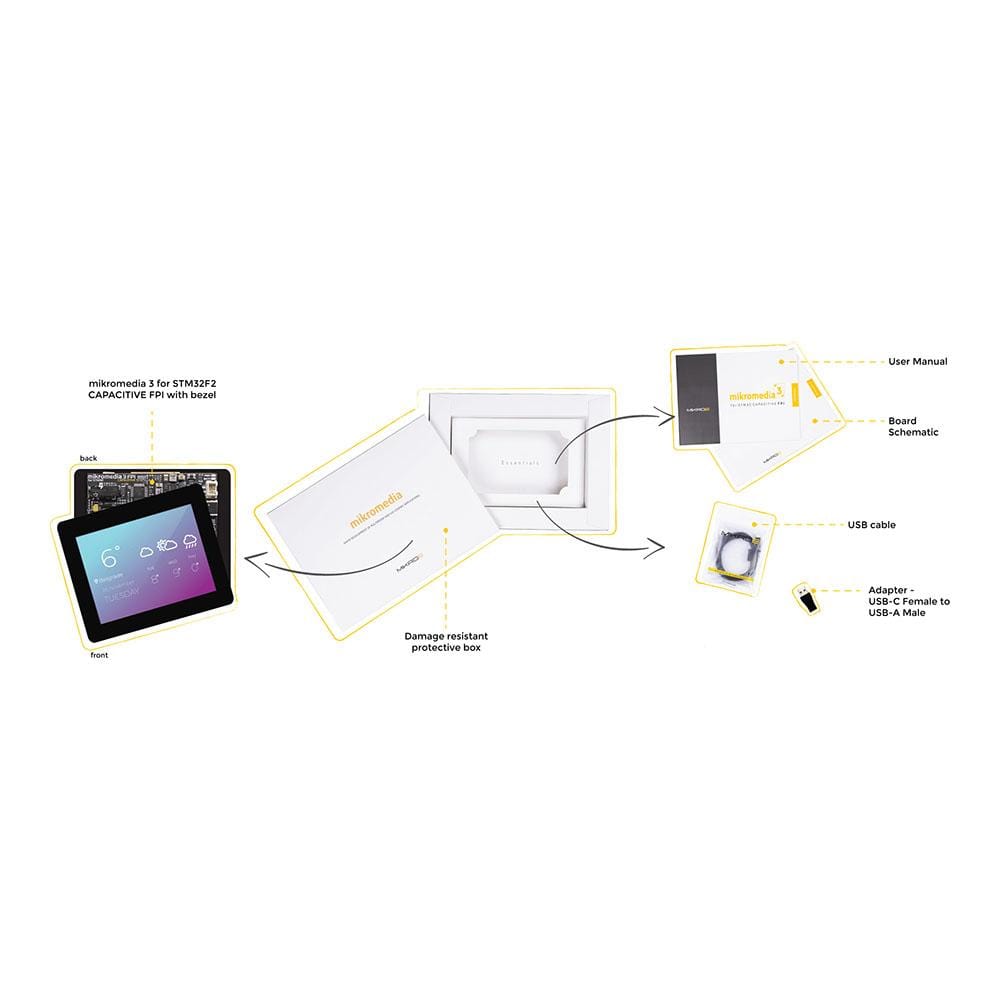
BUILD GREAT GUI IN NO TIME

Rich with peripherals
The Mikromedia 5 for STM32F7 Capactitive FPI with Bezel is not limited to multimedia-based applications only. USB, WiFi and RF connectivity options, digital motion sensor, battery charging functionality, piezo-buzzer, SD card reader, RTC, and much more expands its use beyond the multimedia.
Mikromedia 5 for STM32F7 CAPACITIVE FPI with bezel has three mikroBUS™ Shuttle connectors, a brand-new addition to the mikroBUS™ standard in the form of a 2x8-pin IDC header with 1.27mm (50mil) pitch. mikroBUS™ Shuttle extension board is an add-on board equipped with the conventional mikroBUS™ socket, which ensures compatibility with 898 Click boards™.

Awesome graphics on MCU driven TFT display
Mikromedia 5 for STM32F7 CAPACITIVE FPI with bezel is a compact development board designed as a complete solution for the rapid development of multimedia and GUI-centric applications. By featuring a 5" TFT display with capacitive touch screen driven by the powerful graphics controller that can display the 24-bit color palette (16.7 million colors), along with a DSP-powered embedded sound CODEC IC, represents a perfect solution for any type of multimedia application.

Develop-on & build-in the same board
Mikromedia 5 for STM32F7 CAPACITIVE FPI (FPI stands for Front Panel Integration) with bezel is designed as the complete solution. It can be implemented directly into any project, with no additional hardware modifications. At its core, there is a powerful 32-bit STM32F746ZGT6microcontroller from STMicroelectronics, which provides sufficient processing power for the most demanding tasks. Board has a TFT display with a bezel around it and it is ideal for handheld devices. For most uses, a nice casing is all that is needed to turn this product into a high-performance, feature-rich device.
This board requires the use of an external programmer and debugger, preferably CODEGRIP or mikroProg. The microcontroller can be programmed and debugged over the JTAG/SWD compatible 2x5 pin header, labeled as PROG/DEBUG.
WHAT'S ON BOARD

Sound, connectivity & expandibility
A very popular WiFi module labeled as CC3100 enables WiFi connectivity. This module is the complete WiFi solution on a chip: it is a powerful WiFi network processor with the power management subsystem, offering the TCP/IP stack, powerful crypto engine with 256-bit AES support, WPA2 security, SmartConfig™ technology, and much more.
Resource-demanding and complex audio processing tasks can be offloaded from the host MCU by utilizing a dedicated audio CODEC IC, labeled as VS1053B. This IC supports many different audio formats, commonly found on various digital audio devices.
The host MCU can be programmed and debugged over the JTAG/SWD compatible 2x5-pin header. A high-precision buffered voltage reference from Microchip is used to provide a very precise voltage reference with no drift, when required. The FXOS8700CQ, an advanced integrated 3-axis accelerometer and 3-axis magnetometer can detect many different motion-related events.

State of the art power supply, Display & Graphics controller
A high-quality 5" TFT true-color display with a capacitive touch panel is the most distinctive feature of the mikromedia 5. The display has a resolution of 800 by 480 pixels, and it can display up to 16.7M of colors. The display module is controlled by the SSD1963 graphics driver IC from Solomon Systech. This is a powerful graphics coprocessor, equipped with 1215KB of frame buffer memory. It also includes some advanced features such as the hardware accelerated display rotation, display mirroring, hardware windowing, dynamic backlight control, programmable color and brightness control, and more.
The Power Supply Unit (PSU) provides a clean and regulated power, necessary for a proper operation of the mikromedia 5 development board. It is equipped with four different power supply inputs, offering all the flexibility that mikromedia 5 needs.

More connectivity
The microSD card slot allows storing large amounts of data externally, on a microSD memory card. The microSD card detection circuit is also provided on the board.
The host MCU is equipped with the USB peripheral module, allowing simple USB connectivity.
There are three mikroBUS™ Shuttle connectors on the development board, labeled from MB1 to MB3. Typically, a mikroBUS™ Shuttle connector can be used in combination with mikroBUS™ Shuttle extension board but is not limited to it. mikroBUS™ Shuttle extension board is an add-on board equipped with the conventional mikroBUS™ socket and four mounting holes. It can be connected to the mikroBUS™ Shuttle connector by a flat cable. This ensures compatibility with the huge base of Click boards™.
The RTC peripheral utilizes a separate power supply source, typically a battery. To allow continuous tracking of time, mikromedia 5 is equipped with a button cell battery that maintains RTC functionality even if the main power supply is off.
Mikromedia 5 for STM32F2 Capacitive FPI with Bezel
Frequently Asked Questions
Have a Question?
Be the first to ask a question about this.

